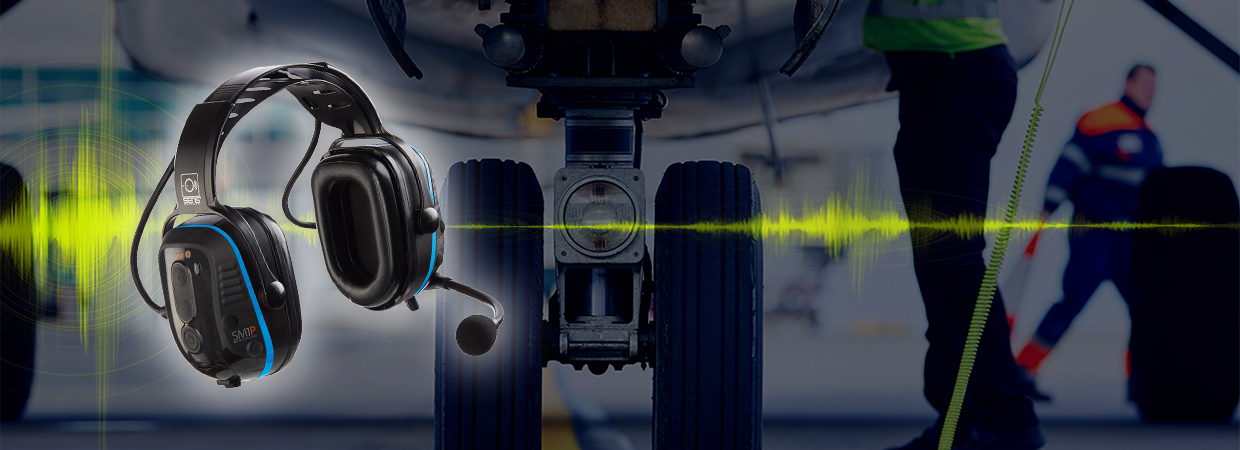- Home
- Blog
- Sensear Technology
- Hear-Through Technology: An Overview

 Hearing protection has long been discussed among business leaders in the industrial workforce environment. If you were to pull any industrial employee off of the street today for questioning, they would probably be able to immediately recognize the term “occupational noise exposure.” Occupational noise exposure is a fancy expression that refers to a simple concept: being around a dangerously loud piece of equipment in the workplace. Hear-Through technology was developed in an effort to combat a specific set of downfalls with traditional hearing protection equipment by providing users with a unique solution. Read the information below to learn more about why traditional forms of hearing protection are not ideal and why hear-through technology provides an essential solution.
Hearing protection has long been discussed among business leaders in the industrial workforce environment. If you were to pull any industrial employee off of the street today for questioning, they would probably be able to immediately recognize the term “occupational noise exposure.” Occupational noise exposure is a fancy expression that refers to a simple concept: being around a dangerously loud piece of equipment in the workplace. Hear-Through technology was developed in an effort to combat a specific set of downfalls with traditional hearing protection equipment by providing users with a unique solution. Read the information below to learn more about why traditional forms of hearing protection are not ideal and why hear-through technology provides an essential solution.
The Workplace Today
The workplace today is far different than the workforce that was present when the first traditional hearing protection headsets were manufactured. Thanks to the advent of incredible technology in the 21st century, more and more of the goods and services produced by employees today are created with the aid of technology. Unfortunately, much of the technology used is very loud – so much so, that one machine alone could cause hearing impairment or even deafness within a matter of days. Today’s workplace is far more dangerous than the workplace of the past.
Employees Risk Exposure Removing their Headsets to Communicate the Problem with Traditional Protection
 Obviously, employers are not passively standing by, while their employees experience injury. This is where the discussion about hearing protection comes into play. The correct hearing equipment can totally protect employers and employees alike from overly loud noise exposure on the job. The only problem is that much of the traditional hearing protection equipment manufactured provided employees with hearing protection that was “too good.” Traditional headsets are made to totally block out all sound. Most people can easily see why this poses a problem for the workforce: an all-encompassing blockage of sound equates to workers who are literally deafened to their surroundings. Since traditional headsets block all sound, users become oblivious to their surroundings. This can lead to many problems:
Obviously, employers are not passively standing by, while their employees experience injury. This is where the discussion about hearing protection comes into play. The correct hearing equipment can totally protect employers and employees alike from overly loud noise exposure on the job. The only problem is that much of the traditional hearing protection equipment manufactured provided employees with hearing protection that was “too good.” Traditional headsets are made to totally block out all sound. Most people can easily see why this poses a problem for the workforce: an all-encompassing blockage of sound equates to workers who are literally deafened to their surroundings. Since traditional headsets block all sound, users become oblivious to their surroundings. This can lead to many problems:
- Increased vulnerability to dangerous equipment malfunctions. If an employee cannot hear alarms, clattering, or other key indicators of an impending disaster, he or she cannot quickly escape the peril at hand.
- Decreased effectiveness in employer to employee communication. Employers are unable to efficiently communicate with employees who are wearing noise-canceling hearing protection.
- Decreased productivity. A decrease in communication directly results in decreased productivity, which is every employer’s worst nightmare.
- Employees often risk exposure to noise when momentarily removing one or both sides of the hearing protection to be able to communicate face-to-face or to briefly listen to their surroundings. Even this short amount of exposure in these high noise environments can lead to short-term and even long-term effects on an employee’s hearing.
The Solution
The solution to the problems presented by traditional hearing protection concepts is called hear-through technology. It is also commonly referred to as talk-through technology. Hear-through and talk-through headsets were carefully designed by Sensear with the implementation of SENS® (Speech Enhancement Noise Suppression) Technology. This technology promotes workplace safety due to its unique ability to filter out noise around users without totally cutting out all surrounding noise. Hear-through and talk-through technology make it possible for individuals to embrace situational awareness without exposure to unhealthy levels of occupational noise exposure.
SENS® Technology is changing the way industrial businesses work by increasing productivity and safety at the same time. Those who are interested in providing quality protection for employees without losing efficiency may benefit from Sensear’s innovative technology.







